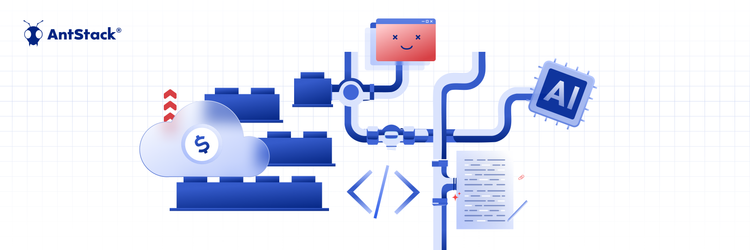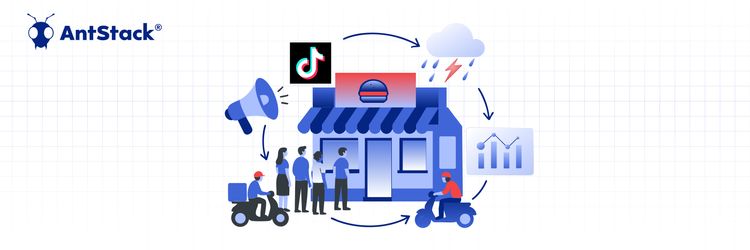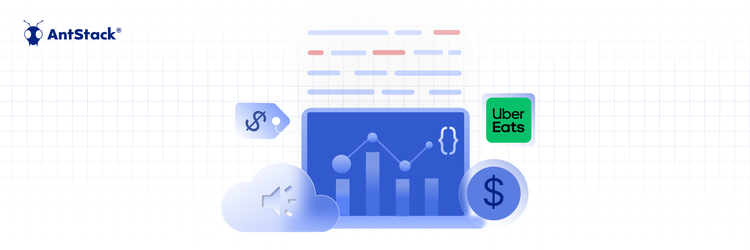From Metadata to Monetization: Building Real-Time Pipelines with Serverless AI
In today’s cloud landscape, serverless computing is regarded as a game-changing technology. Often described as FaaS, or Function as a Service, it represents a model where the cloud provider takes full responsibility for provisioning, scaling, and maintaining infrastructure.
Developers no longer need to manage servers, operating systems, or capacity planning. Instead, they can focus purely on writing functions and code snippets that respond to events.
By removing the infrastructure management concerns, serverless computing enables teams to build applications that are inherently elastic, event-driven, and cost-efficient. It transforms deployment from a hardware-centric exercise into a problem of pure logic and architecture.
To see this in action, let’s move from the definition to reality and explore how serverless is already powering critical applications in the real world.
The smart vending machines by Coca-Cola, powered by the IoT
In the year 2016, Coca-Cola transformed its traditional vending machines into cloud-based and serverless vending machines. Referred to as FreeStyle, they help save an ample amount of money annually. Customers are allowed to order their drinks, customize their choices, and make an online payment. It also provides the option for customers to receive a confirmation message on their smartphones through the smart vending machines.
Coca-Cola FreeStyle underwent an AWS Well-Architected Review after successfully testing the prototype in April 2020. The prototype was deployed to customer testing sites in early June. The web application was released to the public after a month. After 100 days of conceptualization, the new web application was running on 500 machines by mid to late uly. By the end of August, 10,000 machines were in operation.
Before moving to serverless computing, Coca-Cola had to pay almost $13,000 per machine annually. The serverless deployment decreased the bill to about $4500, thereby lowering the expenses by nearly 66%. In the pandemic, FreeStyle systems handled around 80 million queries every month through the touchless experience.
iRobot
The Massachusetts Institute of Technology roboticists launched the iRobot in 1990. The company provides multi-purpose robots for both commercial and residential use. In 2015, iRobots sold about 14,000 Roomba robotic vacuum units daily during the Amazon Prime Day sale. After the successful event, the organization gained high prominence for its innovation.
However, they faced their first challenge in the very same year, when they had to launch the first internet-connected Roomba vacuums. To address this, they decided to move to Amazon Web Services (AWS).
AWS offered a different combination of hassle-free global services and scalability. iRobots was particularly impressed with serverless services i.e., the AWS Lambda and AWS IoT. the shift saved an ample amount of money for iRobots, as they no longer had to worry about the physical server maintenance or space. It also kept the project within their budget and required no more than 10 resources to execute the new application.
The data-driven clinical decision-making by IDEXX
IDEXX is a global corporation that offers products and services for water testing, animal husbandry, and dairy-related industries.
VetConnect Plus is the company’s latest solution, released using Google serverless technologies. It retrieves diagnostic summaries from more than 1 billion test results across more than 30,000 veterinary offices. The product can accommodate 30 TB of data and saving around $500,000 in IT expenditures annually due to the serverless computing.
The primary objective of IDEXX is data consolidation across its various offerings. The business used AWS to iterate on the data-lake architecture, allowing it to perform large-scale analysis on more than 6 billion invoice items, 250 million pets, and 600 million medications on file.
The scalable on-demand media delivery from Netflix
Netflix is another notable real-life example of serverless computing. In 2017, the company began utilizing serverless technology, after creating a platform capable of handling numerous modifications daily. At the core of Netflix’s unique dynamic scripting platform is a serverless architecture that manages end-user delivery, provisioning, and various real-time platform modifications.
A wide range of publishers submit files to Netflix regularly. These files must be encoded and categorized before being broadcast to consumers. When files are uploaded to Amazon S3, an event is triggered through an AWS Lambda function. This function breaks the movie into 5-minute segments, which are then encoded in 60 parallel streams by Netflix. Through video segment analysis, the content is disseminated and aggregated using predefined rule sets and triggers.
Netflix also uses AWS Lambda for its backup mechanisms. This ensures that every instance is configured and built in compliance with the rules and requirements of the system.
FINRA
FINRA, or Financial Industry Regulatory Authority, is a private organization in the USA, dedicated to securing market integrity for investors. In 2016, FINRA sought to audit the equity securities, stocks, trade events, and different trading practices. To achieve this, it used the OATS, or Order Audit Trail System, to collect market data and create a complete lifecycle of every order, from the individual investor to the business organization.
The data collected daily is massive, as it comes from different exchanges across the country. During the higher trading volume, they get the data twice and three times more than in normal days. To address this challenge, they decided to host the OATS on a third-party cloud platform.
After conducting a deep analysis of available solutions and testing three proofs of concept, FINRA chose AWS Lambda. With serverless, FINRA improved cost efficiency by paying only for the resources consumed.
Major League Baseball
Major League Baseball (MLB) is recognized as the oldest-running and biggest professional sports league. One of its products, Statcast, delivers real-time and highly accurate sports statistics to fans and analysts. Users can execute complex searches on Statcast sites based on variables such as player names, season type, pitch type, and pitch velocity. This service provides precise data to guide in-depth baseball game analysis, made possible through serverless computing.
Slack chatbots
Serverless computing works wonders for different single-function applications like chatbots, which receive different requests of varying complexities. Since chatbot user demands are numerous and unpredictable, allocating a static server often results in underused bandwidth. To resolve this, Slack opts for cloud-based and serverless architectures, using AWS Lambda.
The serverless framework offers a standard approach to developing different serverless solutions across major cloud service providers. It is equipped with extra CLI tools to boost the developer experience, such as secret management, monitoring, and testing tools. .
Conclusion
These stories reveal a common pattern: when infrastructure concerns fade into the background, organizations unlock new speed, scalability, and cost efficiency.
As industries continue to adopt serverless-first architectures, the challenge shifts from “Can it scale?” to “How fast can we adapt?”
At AntStack, this is the question we help enterprises answer every day, by designing serverless systems that are not only technically sound but also built for the realities of business at scale.
FAQs
1. What are some examples of serverless platforms beyond AWS Lambda?
While AWS Lambda is the most well-known, several other providers offer mature serverless platforms. Microsoft Azure Functions, Google Cloud Functions, and IBM Cloud Functions are widely adopted alternatives.
2. Is serverless the future of web or mobile applications?
By eliminating infrastructure management and accelerating development cycles, serverless computing is increasingly shaping the future of application development. While not every workload is a perfect fit, serverless is rapidly becoming the default for APIs, real-time data processing, and mobile backends in modern web and mobile applications.
3. When should you build serverless applications with AWS Lambda and API Gateway?
AWS Lambda and API Gateway are well-suited for event-driven applications, lightweight APIs, and workloads that see unpredictable or spiky traffic. They excel in scenarios such as IoT backends, authentication flows, payment processing, and microservices where automatic scaling and pay-per-use pricing deliver strong business value.
4. What are the benefits of using serverless technologies to build a real-world app?
The main advantages are scalability, cost efficiency, and reduced operational overhead as developers can focus on business logic instead of managing servers.
5. What kind of applications can you build using AWS Lambda and API Gateway?
Lambda and API Gateway power a wide range of real-world applications, from chatbots and recommendation engines to e-commerce APIs and mobile backends. The flexibility of Lambda functions combined with API Gateway’s routing makes it possible to build anything from simple RESTful APIs to complex enterprise-grade platforms.









